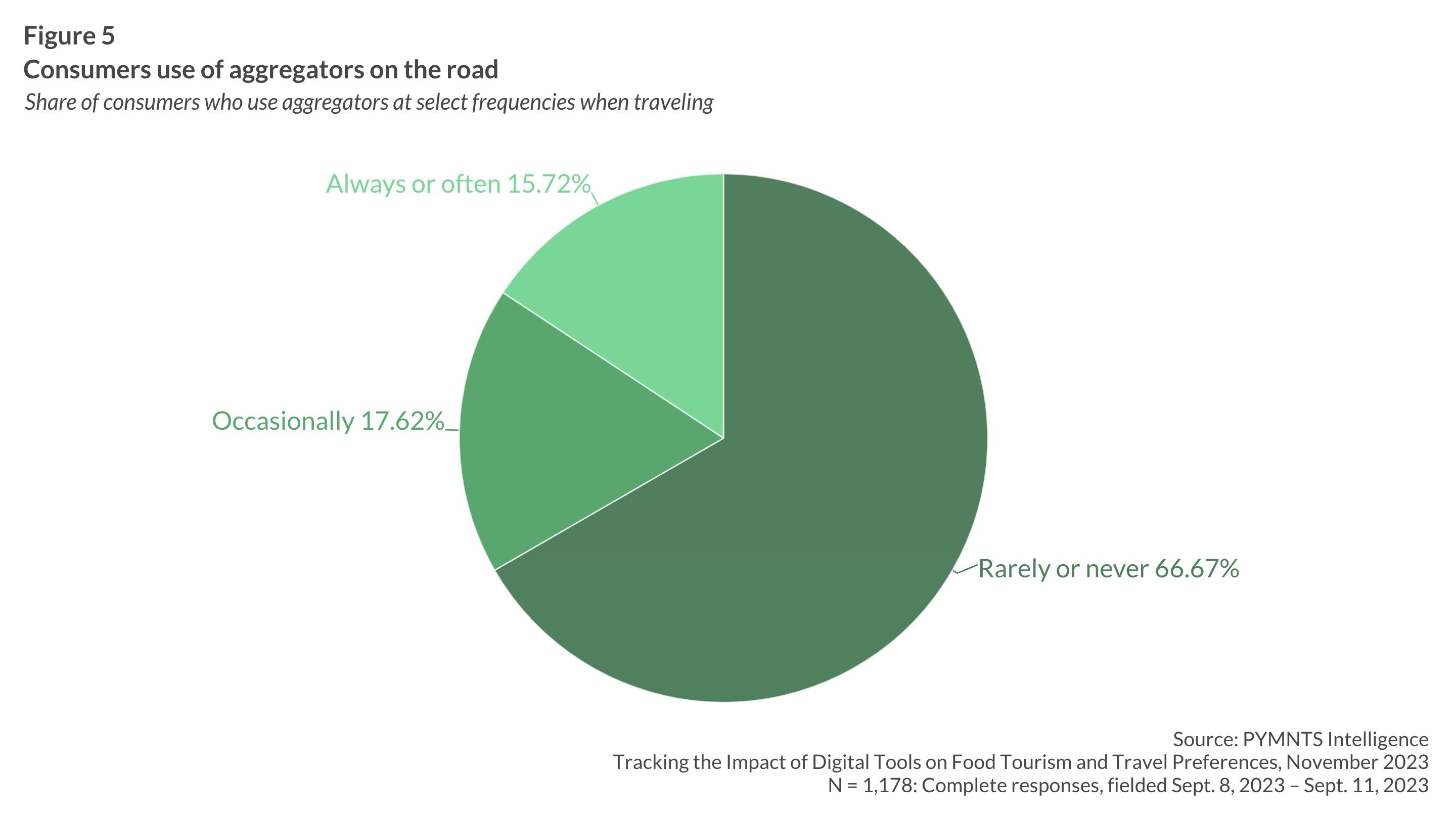Tourism Presents Key Opportunity for Restaurant Aggregators

As aggregators look to broaden their audiences, travel represents a key opportunity, PYMNTS Intelligence reveals, with consumers away from home disproportionately likely to rely on these digital platforms to get their meals.
By the Numbers
The latest installment of the PYMNTS Intelligence Connected Dining series, “Tracking the Impact of Digital Tools on Food Tourism and Travel Preferences,” draws from a survey of more than 2,000 U.S. consumers in September that sought to better understand how their dining habits differ while traveling compared to their restaurant habits at home.
The study found that, overall, only 4.4% of consumers report using aggregators for their latest restaurant purchase. Yet, for travelers, that number is higher, with nearly four times as many (15.7%) saying that they consistently rely on these platforms, and another 17.6% turning to them occasionally, such that a third of all travelers use aggregators at least some of the time during their trips.

The Data in Action
One way that aggregators are capturing this opportunity is by partnering with hotels. As Adam Herbert, senior director of Grubhub Onsite, sales and partnerships, explained in an interview with PYMNTS, these kinds of partnerships seize on consumers’ demand for easy food options when they are in an unfamiliar place, driving adoption of its marketplace among hotel guests.
“In the hospitality realm, we’re solving a need that guests have when traveling: getting meals,” Herbert said. “The properties we partner with don’t have on-site dining options, meaning guests have to go elsewhere to get a meal. Knowing not everyone has a way to go into town and grab a bite to eat, we’re making it easy for guests to order from local spots and get food delivered without having to leave the hotel.”